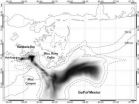(Press-News.org) Neuroscientists and bioengineers at Stanford are working together to solve a mystery: how does nature construct the different types of synapses that connect neurons -- the brain cells that monitor nerve impulses, control muscles and form thoughts.
In a paper published in the Proceedings of the National Academy of Sciences, Thomas C. Südhof, M.D., a professor of molecular and cellular physiology, and Stephen R. Quake, a professor of bioengineering, describe the diversity of the neurexin family of proteins.
Neurexins help to create the synapses that connect neurons. Think of synapses as switchboards or control panels that connect specific neurons when these brain cells must work together to perform a given task.
Neurexins play a key role in the formation and functioning of synaptic connections. Past human genetics studies have linked neurexins to a variety of cognitive disorders, such as autism and schizophrenia.
Südhof, the Avram Goldstein Professor in the School of Medicine and a winner of the 2013 Nobel Prize in Medicine, has spent years studying the many different forms, or isoforms, of neurexin proteins. He has postulated that different isoforms of neurexins may help to create different types of synaptic connections with distinct properties and functions, and thus enable neurons to do so many complex tasks.
But Südhof had no way to know exactly how many isoforms of neurexins existed until he sat down last year with Quake, the Lee Otterson Professor in the School of Engineering. Quake has pioneered new ways to sequence DNA – the master blueprint that nature follows when making proteins.
The study being published in PNAS represents the results of a year-long collaboration between neuroscientists and bioengineers to better understand how different neurexin proteins affect the behavior of synapses and, ultimately, normal brain functions and neurological conditions such as autism.
Though this will not be the last word on the subject, the findings help illuminate how the brain works and improve our understanding of neurological disorders.
Subhead: Understanding the experiment
Inside cells, a molecular machine unzips a double-stranded DNA molecule to create an RNA molecule. The RNA molecule is a copy of all the genetic instructions encoded into the DNA. But only specific regions of this RNA molecule contain instructions for making a specific protein. The cell has ways to remove the unnecessary regions and splice the protein-coding regions into a shorter RNA molecule called messenger RNA or mRNA. Thus, each mRNA contains the full instructions for making a specific protein.
To begin this experiment, Ozgun Gokce, a postdoctoral scholar in molecular and cellular physiology in Südhof's lab, and Barbara Treutlein, a postdoctoral scholar in Quake's lab, extracted brain cells from the prefrontal cortex of a mouse, and then isolated the RNA contained in this tissue.
From this large pool of RNAs they then identified the mRNAs for neurexins. They ran those messenger molecules through equipment designed to read the entire long sequence of chemical instructions for making a specific isoform in the neurexin family of protein.
Quake's lab is adept at using new instruments that allow researchers to read the long sequence of chemicals in an mRNA strand, allowing them to ascertain exactly what directions this messenger is carrying to the cell's protein-making machinery.
"This experiment couldn't have been done even a few years ago," Treutlein explained.
The mRNAs for neurexins are very long chains of nucleotides – the chemicals that encode genetic information. Only recently have instruments been capable of reading the exact sequence of such long nucleotide chains.
The ability to read the entire sequence of each mRNA was essential because neurexins have 25 constituent parts. But not all of these parts are used each time neurons produce a copy of the protein. Isoforms of neurexin have different combinations of these 25 possible parts. This experiment was designed to discover how many isoforms of neurexin existed, and how prevalent each of these isoforms was.
The researchers analyzed more than 25,000 full-length neurexin mRNAs. They found 450 variants. Each variant omitted one or more of the 25 possible components. Most of these isoforms occurred infrequently. A handful comprised the predominant isoforms.
Although the Stanford scientists sequenced 25,000 mRNAs to discover 450 variants, they believe that if they were to sequence even more mRNAs they would discover more isoforms – their estimate is that at least 2,500 isoforms of the neurexin family exist.
"The fact that we see so many isoforms supports the theory that these protein variants contribute to the huge diversity of synaptic connections that neuroscientists have observed," Treutlein said.
The experiment raises many questions for future study. For instance, what functions are performed by the predominant isoforms versus the rare variants; how does the inclusion or exclusion of components affect that isoform and the synapse in which it works?
"This experiment was like a flight over the terrain," Gokce said. "Now we have to go down and look at the details."
INFORMATION:
Tom Abate is the Associate Director of Communications at Stanford Engineering.
Stanford researchers survey protein family that helps the brain form synapses
Groundbreaking study finds hundreds of variants of neurexin proteins, offering new evidence linking these differences to complex brain functions and disorders like autism
2014-03-18
ELSE PRESS RELEASES FROM THIS DATE:
TGen-led study spotlights dog DNA role in developing new therapies for human cancers
2014-03-18
PHOENIX, Ariz. — March 17, 2014 — Using genomic analysis to study cancer in dogs can help develop new therapies for humans with cancer, according to a proof-of-concept study led by the National Cancer Institute (NCI) and the Translational Genomics Research Institute (TGen).
Pure-breed dogs, whose genetics have been standardized by hundreds of years of human intervention, provide highly predictable genetic models useful in designing clinical trials, in which specific drugs are matched to the molecular profiles of human patients, according to the study published today in ...
Kessler Foundation researchers link body temperature to relapsing-remitting MS and fatigue
2014-03-18
West Orange, NJ. March 18, 2014. Kessler Foundation researchers have demonstrated for the first time ever that body temperature is elevated endogenously in relapsing-remitting multiple sclerosis (RRMS) and linked to worse fatigue. The article was published ahead of print on Feb. 21, 2014 in Archives of Physical Medicine & Rehabilitation. Sumowski J, Leavitt V: Body temperature is elevated and linked to fatigue in relapsing-remitting multiple sclerosis, even without heat exposure. doi:10.1016/j.apmr.2014.02.004.
Researchers measured body temperature in 50 patients with ...
NIST chips help BICEP2 telescope find direct evidence of origin of the universe
2014-03-18
The view back in time—way back to the origins of the universe—just got clearer. Much clearer.
A team of U.S. cosmologists using the BICEP2 telescope at the South Pole announced this week that they have discovered the first direct evidence of the rapid inflation of the universe at the dawn of time, thanks in part to technology developed and built by the National Institute of Standards and Technology (NIST).
The BICEP2 camera relies, in part, on the extraordinary signal amplification made possible by NIST's superconducting quantum interference devices (SQUIDs).
The ...
NRL models Deepwater Horizon oil spill
2014-03-18
Dr. Jason Jolliff is an oceanographer with the U.S. Naval Research Laboratory (NRL). "The emphasis here," he says, "is on developing models of the ocean environment to help the naval warfighter." His most recent paper, published in Ocean Modeling (March 2014), shows NRL can also forecast where oil will go following a major spill.
"If you're going to do forecasting," he says, "you have to get the ocean circulation correct. It's fundamental to all else." Jolliff plugged the distribution of surface oil following the 2010 Deepwater Horizon oil spill—when it was still well ...
Canadian drinking-age laws have significant effect on deaths among young males
2014-03-18
A recent study by a University of Northern British Columbia-based scientist associated with the UBC Faculty of Medicine and UNBC's Northern Medical Program demonstrates that Canada's drinking-age laws have a significant effect on youth mortality.
The study was published yesterday in the international journal Drug and Alcohol Dependence. In it, Dr. Russell Callaghan writes that when compared to Canadian males slightly younger than the minimum legal drinking age, young men who are just older than the drinking age have significant and abrupt increases in mortality, especially ...
Global food trade can alleviate water scarcity
2014-03-18
Trading food involves the trade of virtually embedded water used for production, and the amount of that water depends heavily on the climatic conditions in the production region: It takes, for instance, 2.700 liters of water to produce 1 kilo of cereals in Morocco, while the same kilo produced in Germany uses up only 520 liters. Analyzing the impact of trade on local water scarcity, our scientists found that it is not the amount of water used that counts most, but the origin of the water. While parts of India or the Middle East alleviate their water scarcity through importing ...
Using big data to identify triple-negative breast, oropharyngeal, and lung cancers
2014-03-18
Researchers at Case Western Reserve University and colleagues used "big data" analytics to predict if a patient is suffering from aggressive triple-negative breast cancer, slower-moving cancers or non-cancerous lesions with 95 percent accuracy.
If the tiny patterns they found in magnetic resonance images prove consistent in further studies, the technique may enable doctors to use an MRI scan to diagnose more aggressive cancers earlier and fast track these patients for therapy. Their work is published online in the journal Radiology at http://pubs.rsna.org/doi/full/10.1148/radiol.14131384. ...
Strongest evidence yet of 2 distinct human cognitive systems
2014-03-18
BUFFALO. N.Y. — Cognitive scientists may have produced the strongest evidence yet that humans have separate and distinct cognitive systems with which they can categorize, classify, and conceptualize their worlds.
"Our finding that there are distinct, discrete systems has implications for the fields of child development and cognitive aging," says lead researcher, cognitive psychologist J. David Smith, PhD, of the University at Buffalo.
"These distinct systems may have different developmental courses as the cortex matures," he says, "meaning that children may categorize ...
Ipilimumab in advanced melanoma: Added benefit for non-pretreated patients not proven
2014-03-18
The German Institute for Quality and Efficiency in Health Care (IQWiG) already assessed the added benefit of ipilimumab in advanced melanoma in 2012. A considerable added benefit was found for patients who had already received previous treatment. In the new dossier compiled by the drug manufacturer, the drug was now compared with the appropriate comparator therapy dacarbazine specified by the Federal Joint Committee (G-BA) also for non-pretreated patients.
Again, the manufacturer claimed a noticeable gain in survival time and thus an added benefit. This time, IQWiG did ...
Scientists using UNH detector illuminate cause of sun's 'perfect storm'
2014-03-18
DURHAM, NH –– In a paper published today in Nature Communications, an international team of scientists, including three from the University of New Hampshire's Space Science Center, uncovers the origin and cause of an extreme space weather event that occurred on July 22, 2012 at the sun and generated the fastest solar wind speed ever recorded directly by a solar wind instrument.
The formation of the rare, powerful storm showed striking, novel features that were detected by a UNH-built instrument on board NASA's twin-satellite Solar TErrestrial RElations Observatory (STEREO) ...
LAST 30 PRESS RELEASES:
Dynamically reconfigurable topological routing in nonlinear photonic systems
Crystallographic engineering enables fast low‑temperature ion transport of TiNb2O7 for cold‑region lithium‑ion batteries
Ultrafast sulfur redox dynamics enabled by a PPy@N‑TiO2 Z‑scheme heterojunction photoelectrode for photo‑assisted lithium–sulfur batteries
Optimized biochar use could cut China’s cropland nitrous oxide emissions by up to half
Neural progesterone receptors link ovulation and sexual receptivity in medaka
A new Japanese study investigates how tariff policies influence long-run economic growth
Mental trauma succeeds 1 in 7 dog related injuries, claims data suggest
Breastfeeding may lower mums’ later life depression/anxiety risks for up to 10 years after pregnancy
Study finds more than a quarter of adults worldwide could benefit from GLP-1 medications for weight loss
Hobbies don’t just improve personal lives, they can boost workplace creativity too
Study shows federal safety metric inappropriately penalizes hospitals for lifesaving stroke procedures
Improving sleep isn’t enough: researchers highlight daytime function as key to assessing insomnia treatments
Rice Brain Institute awards first seed grants to jump-start collaborative brain health research
Personalizing cancer treatments significantly improve outcome success
UW researchers analyzed which anthologized writers and books get checked out the most from Seattle Public Library
Study finds food waste compost less effective than potting mix alone
UCLA receives $7.3 million for wide-ranging cannabis research
Why this little-known birth control option deserves more attention
Johns Hopkins-led team creates first map of nerve circuitry in bone, identifies key signals for bone repair
UC Irvine astronomers spot largest known stream of super-heated gas in the universe
Research shows how immune system reacts to pig kidney transplants in living patients
Dark stars could help solve three pressing puzzles of the high-redshift universe
Manganese gets its moment as a potential fuel cell catalyst
“Gifted word learner” dogs can pick up new words by overhearing their owners’ talk
More data, more sharing can help avoid misinterpreting “smoking gun” signals in topological physics
An illegal fentanyl supply shock may have contributed to a dramatic decline in deaths
Some dogs can learn new words by eavesdropping on their owners
Scientists trace facial gestures back to their source. before a smile appears, the brain has already decided
Is “Smoking Gun” evidence enough to prove scientific discovery?
Scientists find microbes enhance the benefits of trees by removing greenhouse gases
[Press-News.org] Stanford researchers survey protein family that helps the brain form synapsesGroundbreaking study finds hundreds of variants of neurexin proteins, offering new evidence linking these differences to complex brain functions and disorders like autism





